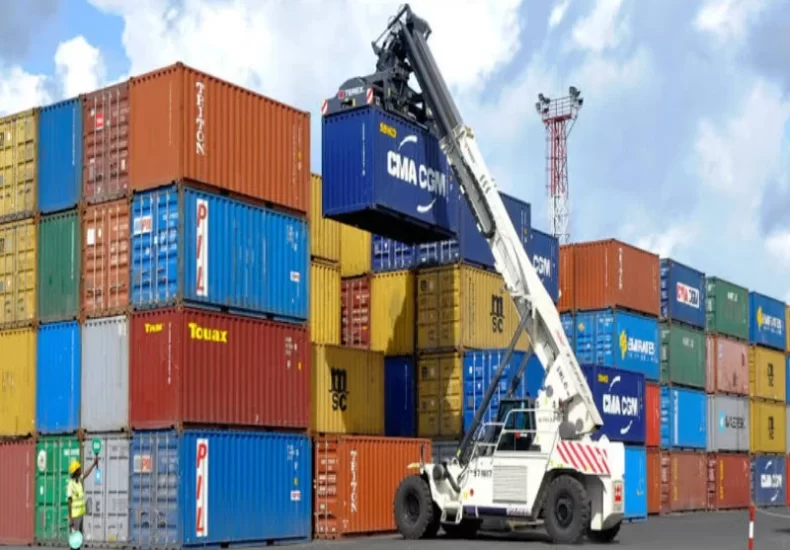
China’s Economic Grows by Only 4.6% in Q3 2024
Aim Toronto – China’s economic growth in the third quarter of 2024 has slowed to its lowest pace since early last year, highlighting the significant challenges the country faces as it strives to stimulate its economy. The world’s second-largest economy has been under pressure for several years, grappling with a range of internal and external factors that have hindered its performance.
According to the BBC on Friday (October 18, 2024), the National Bureau of Statistics of China reported that the country’s gross domestic product (GDP) grew by 4.6% year-on-year during the three months ending in September. This figure is lower than the previous quarter’s growth rate and falls short of the government’s target of around 5% for 2024.
Other official figures released on the same day, including retail sales and factory output, surpassed expectations, offering some positive news amidst the broader economic slowdown. Nevertheless, for the second consecutive quarter, China’s economic growth has fallen below the government’s target, adding to the concerns about the overall health of the economy.
Concerns Over Meeting the 5% Growth Target
The Chinese government’s target of 5% growth for 2024 now appears to be in serious jeopardy. According to Eswar Prasad, a former head of the China division at the International Monetary Fund (IMF), achieving this target will require significant economic stimulus in the coming months.
“The government’s growth target for this year now seems to be in serious danger,” said Prasad. “It will take a substantial stimulus-driven push to reach the target in the fourth quarter,” he added.
China has been struggling with various economic challenges, including a sluggish property market, low consumer and business confidence, and geopolitical tensions. These issues have weighed heavily on growth, despite numerous efforts by Beijing to revive the economy.
Optimism from Moody’s Analytics
Despite the gloomy outlook, some analysts remain cautiously optimistic. Harry Murphy Cruise, an economist at Moody’s Analytics, believes that China’s stimulus measures could still help the country meet its 5% growth target for the year.
He noted that while stimulus efforts may push the economy closer to the target, addressing the underlying structural challenges will require more significant and long-term solutions.
“More will be needed if officials are to tackle the structural challenges in the economy,” Murphy Cruise explained.
The property sector, in particular, has been a drag on China’s growth, with new home prices in September experiencing their fastest decline in nearly a decade. This has raised concerns that the property market downturn could worsen, further hindering the country’s economic recovery.
The Property Sector’s Continued Struggles
The property sector remains one of the biggest challenges for China’s economic growth. Lynn Song, Chief Economist for the China region at ING Bank, expressed concern that the real estate market will continue to weigh heavily on China’s recovery.
“Unsurprisingly, the property market remains the largest drag on China’s growth,” Song said. She added that new investments in the sector are unlikely to see significant recovery until housing prices stabilize and inventory levels decrease.
“Until then, the property sector will remain a significant hindrance to growth,” Song concluded.
Focus on Loans and Property Market Support
In an effort to combat these challenges, the Chinese central bank has been urging banks and financial institutions to increase lending to support growth. On Friday, the People’s Bank of China (PBOC) announced that it had held meetings to encourage banks to step up their lending efforts to boost economic activity.
In September, the PBOC unveiled the country’s largest stimulus package since the pandemic, which included substantial cuts to interest rates and mortgage rates. This package was aimed at revitalizing the property market, which has been in decline for several years.
The stimulus plan also included measures to boost the sluggish stock market and encourage banks to lend more to both businesses and consumers. In the weeks that followed, the Ministry of Finance and other government bodies announced additional plans to further stimulate growth and tackle economic challenges.
China’s Economic Outlook
Despite the stimulus efforts, China’s economy continues to face several obstacles. The property crisis, low consumer confidence, and weak business sentiment are among the significant hurdles. As the world’s second-largest economy, China’s slowdown has global implications, and its ability to recover in the coming months will be closely watched.
While some economists believe that China can still hit its 5% growth target, achieving this will require sustained efforts by the government to stabilize key sectors such as real estate and stimulate consumer demand. Additionally, long-term structural reforms may be necessary to ensure that the economy remains competitive and resilient in the face of future challenges.
For now, the 4.6% growth in the third quarter of 2024 serves as a reminder of the difficulties China faces in its quest for stable and sustainable economic expansion. As Beijing continues to roll out new measures to support growth, the fourth quarter will be critical in determining whether the country can meet its ambitious targets for the year.